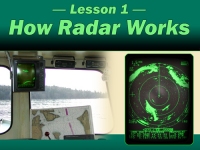
|
Overview of system components • Microwave pulse and beam structure • Radar target characteristics • Range of detection, scanner design, and mounting options • Power requirements • Radiation safety near radar scanners
|
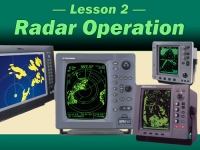
|
Turning on, warning up, and initial adjustments • Gain adjustments • Use of anti-clutter controls for rain (FTC) and sea state (STC) • Pros and cons of optional display modes: Head-up, North-up, and Course-up • Optimizing pulse-length selection • Measuring target range and bearing with VRM, EBL, and cursor mode • Use of guard sectors and alarms
|
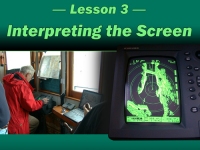
|
Optimizing radar picture for specific observations • Radar shadows • Effect of horizontal beam width on target images • Effect of pulse length on target images • Identifying interference and other unwanted echoes
|
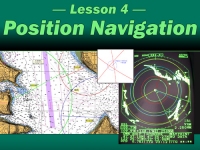
|
Coordinating electronic chart displays with the radar screen • Quick radar range and bearing confirmation of GPS positions • Accurate multi-range fixes using radar
|
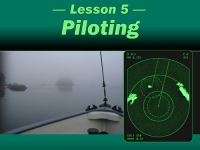
|
Use of radar to hold a desired course • Use of electronic range and bearing line (ERBL) • Finding and keeping track of position relative to prominent landmarks • Identifying distant harbors or channels • Rounding a corner at a safe distance off • Anchoring with radar
|
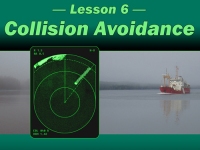
|
Use and value of target trails and wakes • Tracking targets with EBL and VRM • Estimating time, range and bearing to closest point of approach (CPA) • Figuring true course and speed of approaching targets (relative motion diagram) • Determining expected running lights based on radar observations • Rules of thumb for radar maneuvering • Radar reflectors • Overview of ARPA and AIS
|
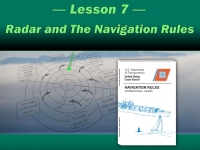
|
Role of radar in evaluating risk of collision • Cautions (limitations) for radar use cited in the rules • Rules' requirements for checking various ranges and adjustments • Application of Rule 19d — when detecting a converging target by radar alone
|

